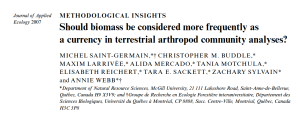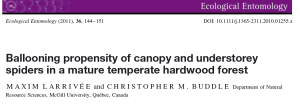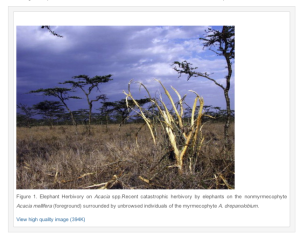1) Scientists do really interesting things.
2) Scientists have a responsibility to disseminate their results.
3) Scientists do not publish in an accessible format.
This is a really, really big problem.
Scientific research is largely funded by public money, and it can be argued that scientists have a responsibility to make their work accessible to the public (and scientists are particularly well suited for outreach activities!). The main platform for disseminating research results is the peer-reviewed journal paper and this is not ideal. Let’s be honest - these kinds of publications are often very specialized, full of jargon, and unreadable to most (even other scientists). Many papers are also behind pay-walls, making them even less accessible to people outside of certain institutions.
Earlier this week I attended a scientific conference (the annual meeting of the Entomological Society of Canada) and as part of this conference I was invited to speak in a symposium that was about social media in science. It was a great session and some of my favourite social media mentors were also speaking at the symposium, including Adrian Thysse, macromite, the Bug Geek, and Biodiversity in Focus. As I was preparing that talk the week before, I was also madly finishing a grant application, and in that application I was require to write a plain-language summary of my proposed research. The granting agency uses this ‘summary for public release’ as a way to communicate research to the public. Taxpayers fund the research and they might want to know where their money is going; the granting agency has found one way to communicate this information in a clever and effective manner.
…………………………..Eureka!
Here is the proposal: Every scientific paper published in a peer-reviewed journal must be accompanied by a short, plain-language summary of the work.
This summary would be placed on-line, free for everyone to read. It would be concise, clear, free of jargon, and highlight why the work was done, how it was done, and what was discovered.
Here are some examples of how these plain-language summaries could be used:
1. Media: Media offices at Universities are constantly interested in promoting fantastic work by their Professors. This work, however, is often not accessible and it can be a lengthy process to put together a press release (how easy is it to track down a researcher?). A plain-language summary written by the researcher would be readable, clear, accessible, and an easy way to start the process of promoting research activities occurring at Universities.
2. Blogging: I am a regular blogger, and always happy to promote the research occurring within my laboratory, the laboratories of colleagues, or just discussing interesting scientific papers that I have read. If I had plain-language summaries to access, it would make the process that much easier, and help facilitate timely communication with the public about recently published work. Other science bloggers could also pick up on these summaries for their own writing.
3. Publishers & Editors: As an editor-in-chief for a scientific journal, I sometimes look for ways to promote great papers, and promote the journal to a larger audience. If I was able to peruse the summaries for public release, this would make the process much easier. Publishers could also take text from these summaries, put together a press release or blog post, and also promote research results from their journals based on particularly interesting papers and findings.
4. For Everyone: In my experience, people outside my area of expertise are always keen to hear about research activities. It’s sometimes a challenge for me to explain my research results, and if I was always doing plain-language summaries, this would get easier. The audience for research results can be as big as you can imagine: high school students, friends, family, colleagues, Departmental chairs, graduate students, journalists, libraries, etc… Finally, the Bug Geek has a great post about the challenges of talking science to 10-year olds: it is hard to do, but important. We need practice. These summaries will help.
The procedure for getting plain language summaries could be quite simple. When an author submits the final revisions on a scientific publication, they would be required to write a short plain-language summary. I would like to think that publishers would be willing to incorporate this (simple) step into the on-line systems for manuscript processing, and be willing to post these, as open-access, on their websites, possibly paired with Abstracts. These summaries would not diminish the value of the actual peer-reviewed papers - it would probably help increase readership since these summaries would help people find the work they are actually looking for, and give them a doorway into the scientific literature.
Let’s make this happen.
It will be an effective way to do science outreach.
Please comment, share the idea, and let’s see this idea grow.










